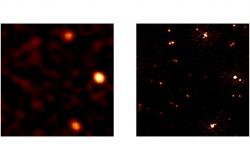The American space agency NASA is faced with the challenge of bringing soil samples collected by the Mars rover Perseverance back to Earth. The Mars Sample Return mission was originally scheduled for the year 2040.
Too expensive and too late
The price tag for this mission now stands at $11 billion, which is too much for NASA. The implementation is also too late for the American Space Society’s liking. In addition, this mission requires doing something that has never been done before: launching a rocket from the Martian surface. In short: it has to be cheaper, faster and simpler.
NASA community
The NASA community is being called on to come up with a new innovative plan that uses proven technology. NASA will soon also invite industry to come up with proposals that would make it possible to collect the samples sometime in the 2030s-2040s. NASA hopes to come up with a new plan by the end of this year. This deletes the original mission.
In the sky you can watch this week:
Sun and moon times (Saturday April 27)
Sunrise: 6:11 am; under 8:57 p.m.
Moon at: 5:04 PM (Saturday); bottom: 5:50 am (Sunday).
Moon – The phase of our natural satellite is decreasing. We find the moon in the morning sky. On Wednesday, May 1, the moon enters the phase of Last Quarter (half, zodiac sign Capricorn) at 1:27 PM.
Planets – With the help of binoculars, Saturn can be spotted with some difficulty above the east-southeast horizon shortly before sunrise. Jupiter can be seen low in the west-northwest shortly after sunset. The giant planet will remain visible until 10:15 p.m. Then it sets in the west-northwest. Visibility decreases sharply. He can only be seen for less than an hour.
Meteors – The Eta Aquarids are active from April 17 to May 27. These meteors come from the direction of the constellation Aquarius, which is low in the east-southeast in the early morning. The late night/morning is therefore the best time to see these meteors. Maximum activity is expected on May 5 with about 50 meteors per hour. The Lyrids are active for the last week. They come from the direction of the constellations Hercules and Lyra (at night in the northeast/east) until April 30. The high point is over.
More information: RP Elings, tel. 0527-699142 / 06-51931417; email: [email protected].






